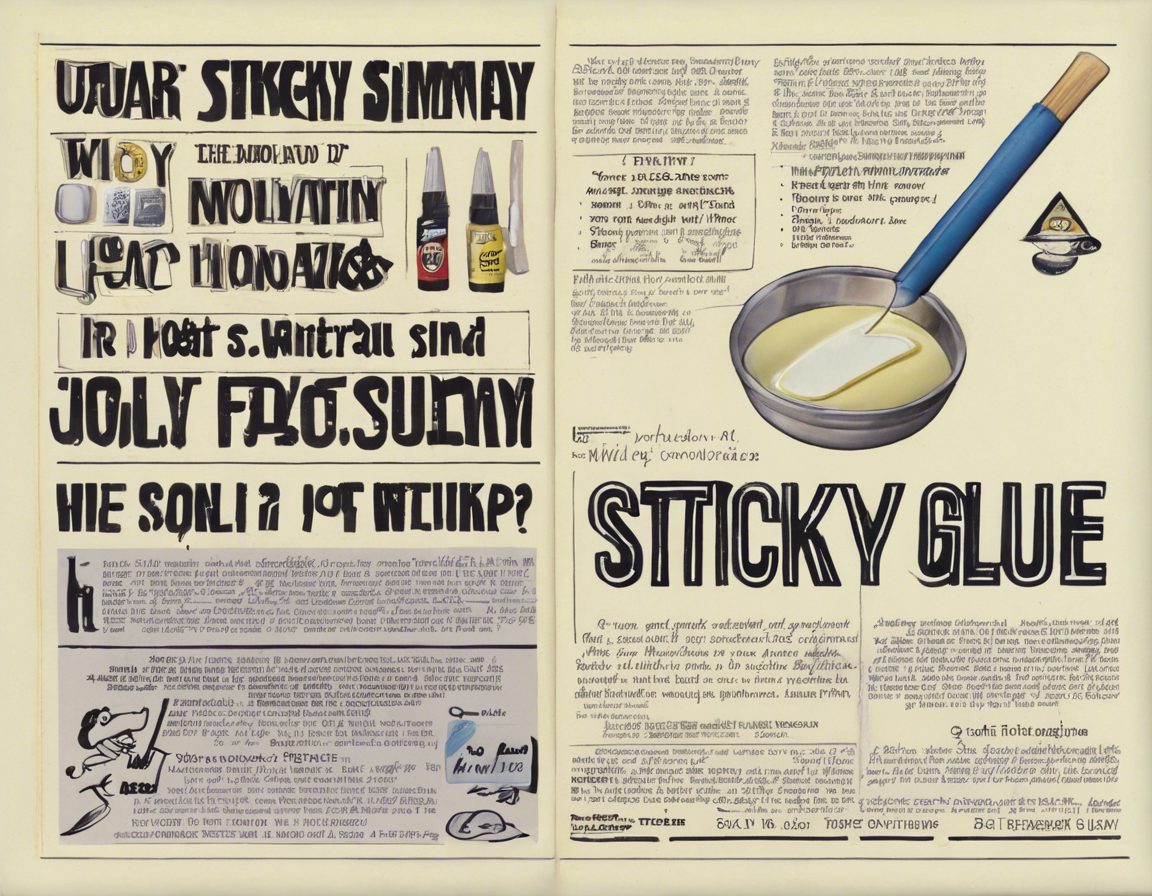Unlocking the Power of Sticky Glue: Tips and Tricks
Imagine a world without glue. From crafting projects to repairing household items, glue plays a significant role in our daily lives. One of the most common types of glue is sticky glue, a versatile adhesive that can bond various materials together. In this comprehensive guide, we will delve into the world of sticky glue, exploring its properties, applications, and tips for getting the most out of this powerful adhesive.
Understanding Sticky Glue
Sticky glue, also known as white glue or school glue, is a water-based adhesive that dries clear. It is non-toxic, making it safe for use in various applications, including arts and crafts, woodworking, and general repairs. Sticky glue works by forming a bond when the water in the glue evaporates, leaving behind a strong adhesive bond between two surfaces.
Types of Sticky Glue
There are several types of sticky glue available on the market, each designed for specific applications. Some common types include:
1. PVA Glue
Polyvinyl acetate (PVA) glue is the most common type of sticky glue. It is ideal for use on porous materials such as wood, paper, and fabric. PVA glue dries clear and is flexible once cured, making it suitable for a wide range of projects.
2. Craft Glue
Craft glue is a versatile adhesive designed for use in arts and crafts projects. It is often available in various formulations, including clear, white, and glitter options. Craft glue is ideal for bonding lightweight materials such as paper, cardboard, and foam.
3. Wood Glue
Wood glue, as the name suggests, is designed specifically for bonding wood surfaces. It creates a strong bond that is ideal for woodworking projects. Some wood glues are also water-resistant, making them suitable for outdoor applications.
Tips for Using Sticky Glue
To ensure the best results when using sticky glue, consider the following tips and tricks:
1. Surface Preparation
Before applying sticky glue, ensure that the surfaces to be bonded are clean and free of dust, debris, and grease. Roughening the surfaces slightly can also improve the bond strength.
2. Clamping
For optimal bonding, use clamps to hold the bonded surfaces together while the glue dries. This will help ensure a strong and lasting bond between the materials.
3. Thin Layers
Avoid applying thick layers of sticky glue, as this can extend the drying time and weaken the bond. Instead, apply a thin, even layer of glue to both surfaces for the best results.
4. Drying Time
Allow sufficient time for the sticky glue to dry and cure properly before handling the bonded materials. This will help ensure a strong and durable bond between the surfaces.
5. Cleanup
Clean up any excess glue immediately using a damp cloth. Once the glue has dried, it can be challenging to remove, potentially affecting the appearance of the project.
Applications of Sticky Glue
Sticky glue is a versatile adhesive with a wide range of applications. Some common uses include:
- Arts and Crafts: Sticky glue is ideal for various arts and crafts projects, such as paper crafting, scrapbooking, and fabric embellishments.
- School Projects: Sticky glue is a staple for school projects, from creating dioramas to building models.
- Woodworking: Wood glue is essential for woodworking projects, such as furniture making, cabinetry, and repairs.
- General Repairs: Sticky glue can be used to repair a variety of items around the house, from broken ceramics to loose chair legs.
Frequently Asked Questions (FAQs)
1. Can sticky glue be used on plastic surfaces?
Yes, sticky glue can be used on certain types of plastic surfaces. However, it is essential to check the compatibility of the glue with the specific type of plastic to ensure a strong bond.
2. How long does sticky glue take to dry?
The drying time for sticky glue can vary depending on factors such as temperature, humidity, and the thickness of the glue layer. In general, sticky glue can take anywhere from a few hours to 24 hours to dry completely.
3. Is sticky glue waterproof?
While some sticky glues are water-resistant, most are not fully waterproof. It is important to check the product label to determine the water resistance of the glue before using it in wet or outdoor environments.
4. Can sticky glue be painted over?
Once sticky glue has dried and cured, it can be painted over with most paints. However, it is essential to ensure that the glue is fully cured before painting to avoid any adhesion issues.
5. How should sticky glue be stored?
To prolong the shelf life of sticky glue, store it in a cool, dry place away from direct sunlight and extreme temperatures. Ensure that the lid is tightly sealed to prevent the glue from drying out prematurely.
In conclusion, sticky glue is a powerful adhesive that can be used in a wide range of applications. By understanding its properties and following the tips outlined in this guide, you can unlock the full potential of sticky glue in your projects. Whether you’re crafting, repairing, or creating, sticky glue is a valuable tool to have in your arsenal.

